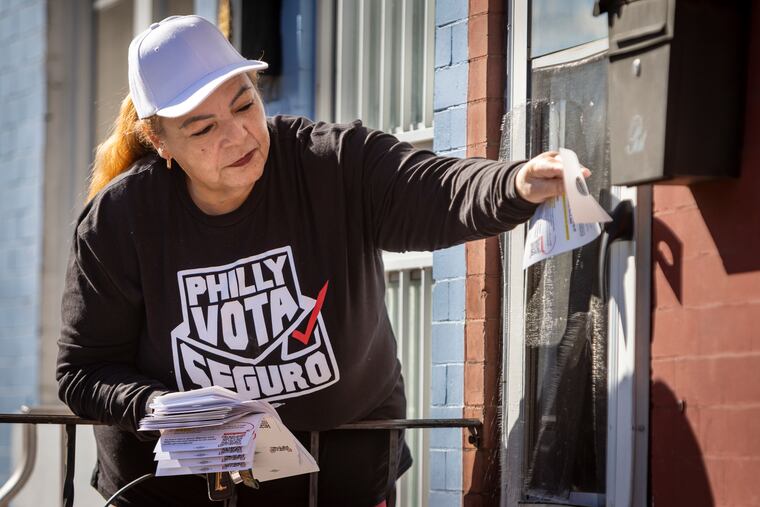Philadelphia Democrats have a big problem
Philadelphia’s turnout numbers are in free fall, which could have major ramifications in statewide elections. Local Democratic leaders should adopt best practices from the highest-turnout wards.

In the weeks since the 2022 general election, the national Republican Party has undergone much-needed soul searching. After the forecasted “red wave” failed to materialize, prominent Republicans have admitted they have a leadership problem and need a course correction as the former president and leader of their party is more concerned with maintaining his grip on power and stroking his ego than with winning elections.
But looking at Philadelphia’s turnout from November, it’s clear that the city’s Democratic Party is facing a similar moment of reckoning.
While Pennsylvania Democrats had a strong showing on Election Day, Philadelphia’s share of the overall vote in Pennsylvania “plummeted,” in The Inquirer’s words, for the third federal election in a row, dropping by one-third from 2020 — more than any other county in Pennsylvania. Voter turnout statewide exceeded the already high 2018 numbers by 6 percentage points, but Philadelphia cast 12% fewer votes than in 2018, according to data analysis blog Sixty-Six Wards. In 2022, Philadelphia had 12% of the state’s registered voters but represented only 9% of Pennsylvania’s total 2022 vote share; the share of Democratic votes cast by Philadelphians dropped to 15%, down 5 percentage points from 2016.
Philadelphia’s nosediving turnout was not uniform: Some parts of Center City and the Northwest matched their 2018 turnout, and some of the city’s open wards — in which committeepeople vote on who to endorse in elections rather than the ward leader making decisions unilaterally — cast more votes in 2022 than in 2018, according to one analysis. That includes the 2nd Ward in South Philadelphia, where I’m a committeeperson and first vice chair.
But despite a few isolated bright spots, the overall picture is clear: Democrats had a good night in Pennsylvania in spite of Philadelphia, not because of it. And in a closer race, Philadelphia’s underperformance could have cost statewide Democratic candidates’ elections.
Two years ago, after Philadelphia underperformed turnout expectations in the 2020 election, I called on the Philadelphia Democratic City Committee, led by former Rep. Bob Brady, to seize the moment to increase turnout in Philadelphia, drawing on best practices from the highest-turnout wards in the city. Those recommendations, which I later fleshed out in a more detailed plan I shared with the local party, included engaging and training committeepeople to canvass, register, educate, and turn out their neighbors; supporting low-turnout wards with additional resources and volunteers; leading a citywide voter registration push; and engaging voters year-round.
Two years later, that plan is still collecting dust as Philadelphia’s turnout numbers are in free fall.
Preelection citywide organizing, registration, and canvassing efforts were left to individual wards and campaigns without any direction or coordination from Brady and the citywide party. There were isolated efforts — Unite Here organized union workers to knock on doors, and State Sen. Nikil Saval and State Rep. Elizabeth Fiedler launched their own get-out-the-vote effort focused on three wards in South Philadelphia — but no larger vision or strategy.
Meanwhile, local party leadership has been focused on backing incumbent ward leaders — some of whom clung to power in controversial, undemocratic ways — during June ward leadership elections and squabbling with city commissioners. Younger progressives who have tried to get involved in local party efforts at the ward and city level report feeling unwelcome and ignored.
This isn’t a game. The stakes are higher than who’s clinging to power in a machine that is rapidly losing relevance. Elections have real-life consequences, affecting our schools, our economic well-being, our access to health care, our reproductive freedom, and more. And our marginalized communities, which are most affected by a lack of effort to engage voters, will suffer the most if Philadelphians are underrepresented in statewide elections and government.
Brady often speaks admiringly of his friend and longtime Democratic House Speaker Nancy Pelosi, who recently showed grace and leadership by stepping down as speaker to make space for the next generation of Democratic leaders. If local party leaders don’t feel a sense of urgency to transform the Democratic City Committee into a truly democracy-focused organization that works year-round to build grassroots power among voters across our city, they should follow her lead and make room for those who will.
Laura Boyce is a committeeperson in the 18th Division of Philadelphia’s 2nd Ward. laura.n.boyce@gmail.com